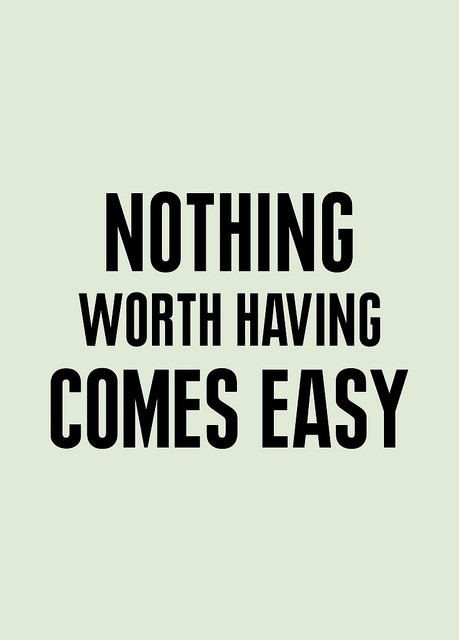"Opportunity is missed by most people because it is dressed in overalls and looks like work." - Thomas Edison
In early 2010, I was in tenth year in administration and my seventh year as a high school principal. To that point in my career, I had spent a great deal of time focused on understanding curriculum, instruction, assessment and intervention through the lens of the Professional Learning Community. In different schools, we had created collaborative time for teachers, determined essential learning outcomes for our students, created intervention strategies for those students who didn't learn those outcomes, and additional opportunities for those that did. And while no where near perfect, we had seen a distinct and notable increase in success rates for our students. For the most part, things seemed to be going pretty well.
However, like many schools, we noticed that in the hyper-stimulating digital environment that we call the 21st century, students were (for the most part) being forced to power down and slow down when they entered our classrooms. We asked ourselves a question: "Our students are being successful in school, but are they engaged in their learning?". And as the Principal of our school, I was doing absolutely nothing to model the use of web tools or social media for learning.
Not good.
As a result, I took took a team to the 21st Century Learning conference Chicago in 2010 so that as a group we could get an understanding of how we could better meet the needs of today's learner and how I personally could lead by example by integrating digital tools into teaching and administration. The conference blew me away: witnessing the power of a digitally enhanced learning environment shook my entire foundation, and changed my thinking about teaching and learning from that point forward.
Four years later, after a few thousand tweets, a couple hundred blog posts, experimenting with dozens of web tools and applications, trying a multitude of different bits of hardware, attending numerous professional development sessions on technology (and eventually giving a few on my own), and enduring a whole host of failures along with a number of successes, I find that I am comfortable working in and around a digital environment.
There was a time when I found myself being a technological evangelist. I would talk to people about the benefits of Twitter ("24/7 professional development!"), about collaborative projects using Google docs, about digital bookmarking, screencasts, podcasts, wikis, blogs, and virtually everything that I came across during my evenings experimenting with different web tools. I would implore people around me just to 'give technology a try', and I would attempt to 'sell' people on the idea that technology "makes life easier" and, after some front end work, saves time on the back end. I would try to place a digital pot of gold at the end of the rainbow for neophyte tech users.
Bad idea.
I don't do that anymore. I use technology, but don't really think about it because it is just a part of my day. I try to model the use of digital applications when they are better for engaging learners, and when they enhance and maximize interactions between the learner, the teacher, the content, and the task. I try to share what it is that we are doing as a school, and I love talking about the uses of technology in classrooms and in administration. I hope that I am the biggest cheerleader when people want to try new things, especially with technology because I get excited about that sort of stuff. But I do not 'sell' the use of technology with the idea that it makes life easier, even though for me personally, digital solutions do in fact make my life much simpler and more efficient. I don't sell it this way because I no longer buy what it I was previously selling.
From where I stand, the truth of the matter is plain: like anything worth doing, integrating technology to increase the individual ownership of learning for students and adults takes time. It takes a willingness to experiment. It takes networking with other people using social media to hear the pros and pitfalls. It takes crowd sourcing of ideas using collaborative tools and applications. It means enduring sketchy wifi and fly-by-night applications that crash and sometimes even disappear from the internet. It means confronting the way that funds have been traditionally spent rather than wistfully dreaming of bags of technology-labelled funding that will never come. Ultimately, integrating technology takes work. And while I don't find this experimentation to be 'work' per se because I enjoy tinkering with web tools, others will find it to be laborious, arduous, and frustrating.
However, the worm that I will dangle at the end of the fishing pole is this: if one is willing to put in this work, integrating technology has the potential to engage learners in a multi-sensory way that was not possible twenty years ago. This is not a certainty, as many use technology as a more expensive substitute for what can be done with an overhead projector. But used well, technology can captivate students in a way that is so rich and interactive that it will allow them and their teachers to work together to ask compelling questions that have multiple answers or (gasp!) no answers at all. In a way that will make students, teachers and administrators stay up at night trying new things and sharing their successes and failures with friends, colleagues and others they have never met. Integrating technology has the potential to make learning better.
But 'better' is not necessarily 'easier'. And that's ok.
